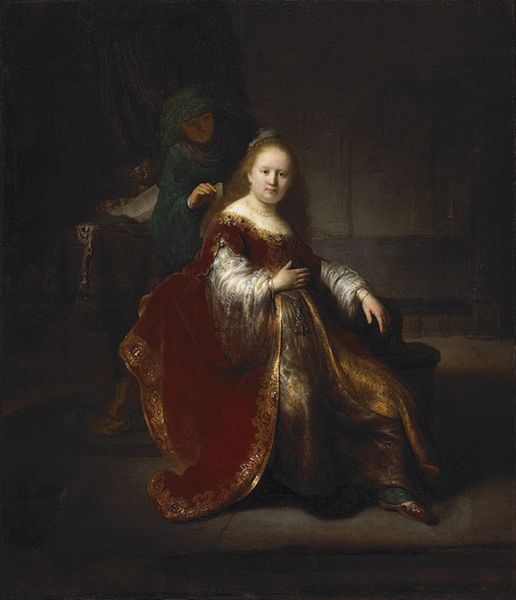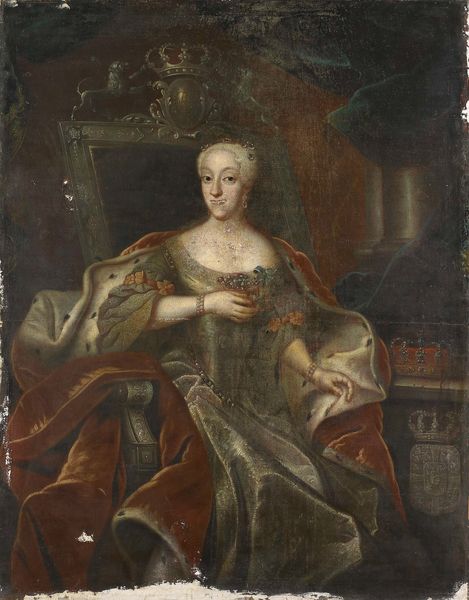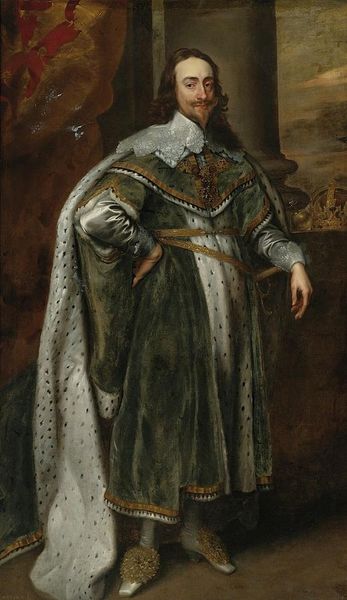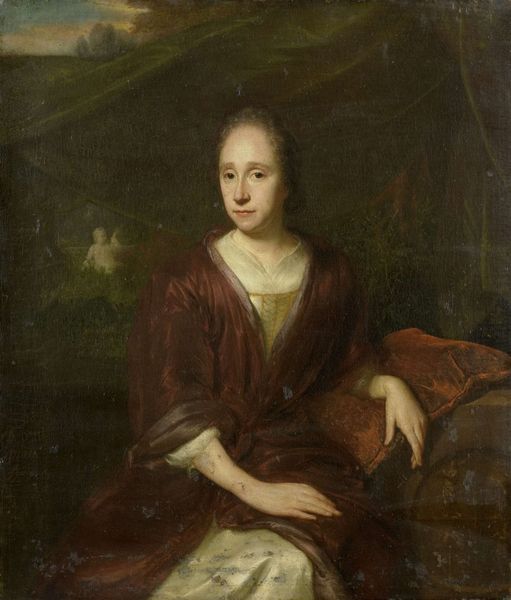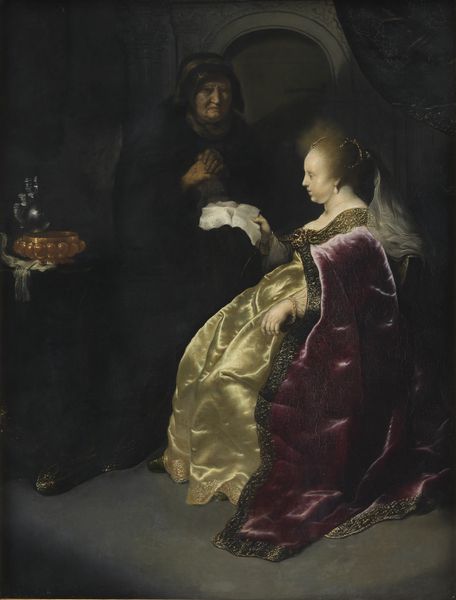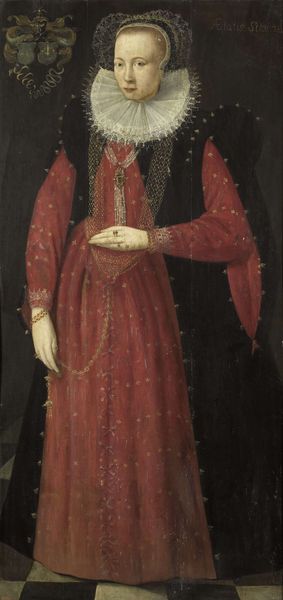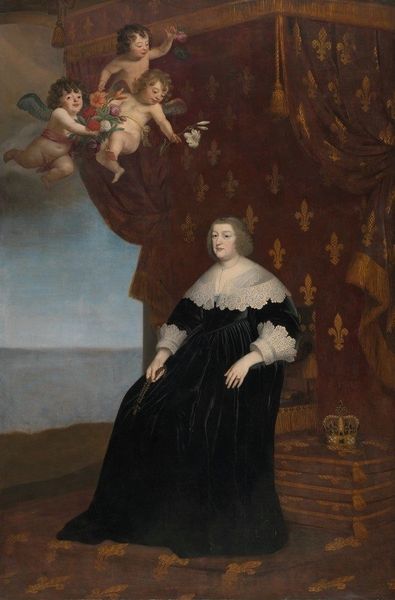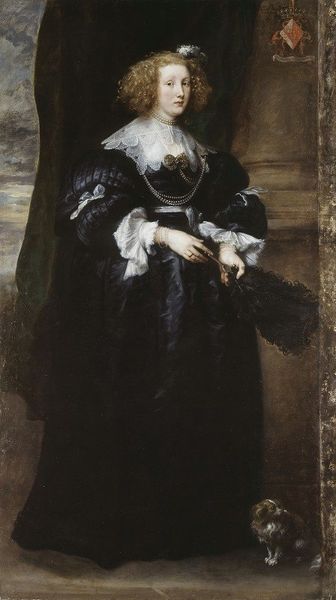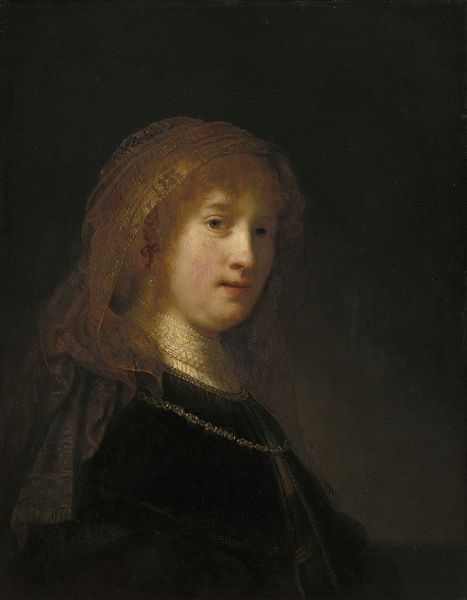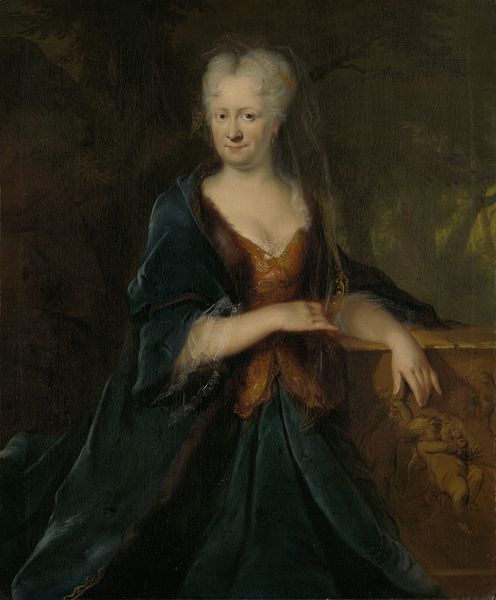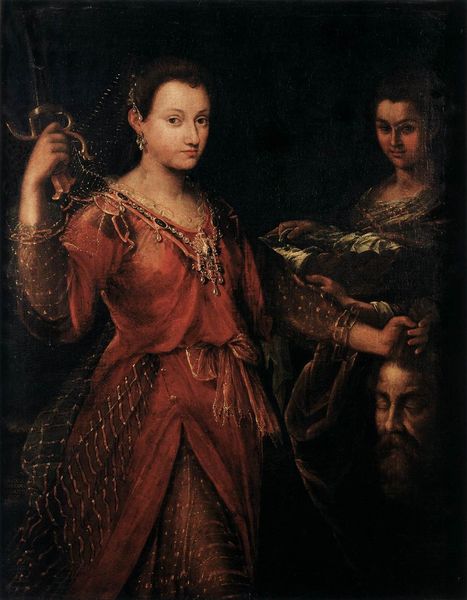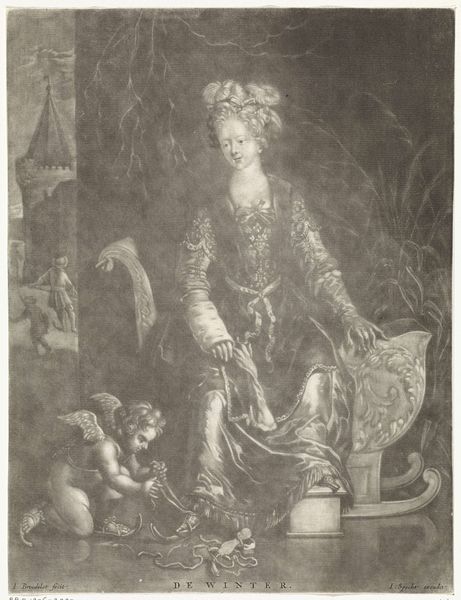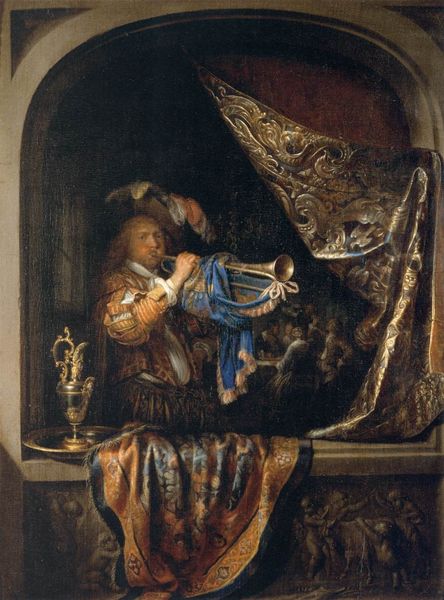
painting, oil-paint
#
portrait
#
baroque
#
painting
#
oil-paint
#
charcoal drawing
#
figuration
#
history-painting
Copyright: Public domain
Curator: Welcome. We're standing before Rembrandt van Rijn's 1631 oil painting, Minerva. It currently resides in the Gemäldegalerie, Berlin. Editor: My first thought is how theatrical it feels. There’s a figure bathed in warm light against an almost overwhelming darkness. It has the quality of a stage production. Curator: The Baroque loved drama! Here, Rembrandt interprets Minerva, the Roman goddess of wisdom and strategic warfare, in a rather interesting way, doesn't he? It's far from a traditional classical depiction. Editor: Absolutely. Considering this was the 17th century, you can already see shifts in how artists were representing mythology, possibly trying to make these figures relatable or at least imbue them with earthly qualities. And the sitter is compelling. Is she someone of note, perhaps? Curator: The model’s identity remains something of a mystery. It's likely someone from Rembrandt’s circle in Leiden, possibly even someone he knew quite well given the intimacy of the portrayal. Some have speculated it was his sister. The important aspect here is that it presents a public role; through his use of costumes and props, Rembrandt allows an ordinary person to embody a symbol. Editor: And her gaze holds so much authority despite the softness of the painting, as you'd imagine with a divinity of her rank. Thinking of the socio-political factors, were there debates about the ideal image of powerful figures, and could this represent an effort to bridge classical idealism and reality? Curator: The painting fits within Rembrandt's exploration of light and shadow, and the theatricality reflects the period's inclination towards dramatic display, of course. Beyond the aesthetic elements, this interpretation of Minerva may indicate shifting cultural values around intellectualism and war as we transition into modernity. Minerva was very present within the cultural consciousness of 17th century Europe. Editor: A truly intriguing interpretation, blending the real and the mythical with such painterly skill! It's fascinating how art continues to spark these dialogues across centuries. Curator: It allows us to delve not only into Rembrandt's genius, but the ways societal values impact the construction, deconstruction, and evolution of images across history. Thanks for your insight!
Comments
No comments
Be the first to comment and join the conversation on the ultimate creative platform.
